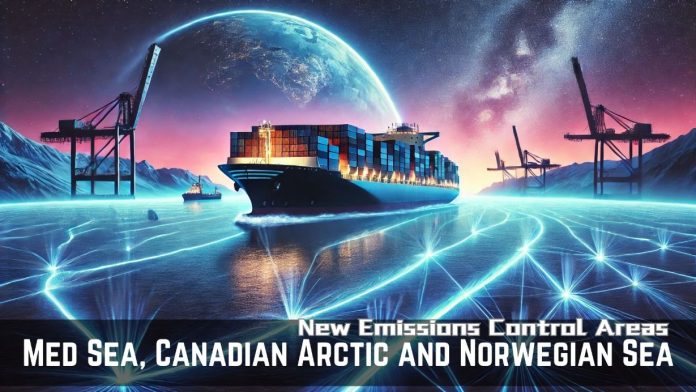Maritime Compliance New Emissions Control Areas for Mediterranean Sea, Canadian
New Emission Control Areas in Maritime Shipping

As global efforts to combat climate change intensify, the International Maritime Organization (IMO) has introduced new regulations affecting the shipping industry. Amendments to MARPOL Annex VI will establish three new Emissions Control Areas (ECAs) in the Mediterranean Sea, Canadian Arctic, and Norwegian Sea. These regulations aim to limit nitrogen oxides (NOx) and sulphur oxides (SOx) emissions, promoting cleaner air and healthier marine ecosystems. Shipowners, operators, and managers must prepare for compliance with these new environmental responsibilities.
New Emission Control Areas Defined
The newly designated ECAs will require ships to adhere to stricter emissions limitations. The Mediterranean Sea will become a SOx ECA starting May 1, 2025. Ships operating in this area must use fuel oils with a sulphur content not exceeding 0.10% m/m unless they employ approved alternatives like Exhaust Gas Cleaning Systems.
The Canadian Arctic and Norwegian Sea will become NOx ECAs on March 1, 2026. Ships with marine diesel engines over 130kW must comply with the NOx Technical Code 2008, meeting the NOx Tier III standard. For the Canadian Arctic, this applies to vessels with keels laid or under construction from January 1, 2025. In the Norwegian Sea, the requirements will affect ships with contracts placed after March 1, 2026, or those with keels laid after September 1, 2026, with delivery on or after March 1, 2030.
Additionally, both the Canadian Arctic and Norwegian Sea will transition to SOx ECAs on March 1, 2027. This means ships must again limit sulphur content in fuel oils to 0.10% m/m, similar to the Mediterranean regulations. Shipowners and operators must ensure they have compliant fuel on board or utilize approved alternative compliance mechanisms before these deadlines.
Compliance and Preparation for Shipowners
With the introduction of these new ECAs, shipowners and operators must take proactive measures to ensure compliance with MARPOL Annex VI regulations. Vessels operating in these regions will need to transition to low-sulphur fuels, implement exhaust gas cleaning systems, or meet the stringent NOx Tier III standards, depending on their operating areas.
Failure to comply could lead to penalties, operational disruptions, and environmental liabilities. As the effective dates approach, early preparation is crucial. This includes planning for fuel transitions, making necessary technical modifications, and obtaining regulatory certifications. Shipowners are encouraged to assess their readiness and engage with classification societies and regulatory bodies to facilitate a smooth transition into these stricter emissions standards.
